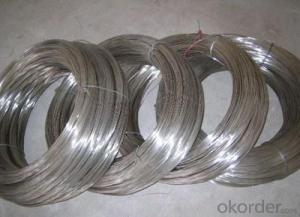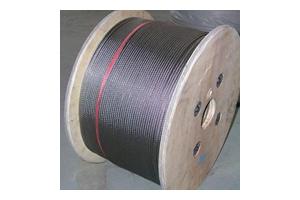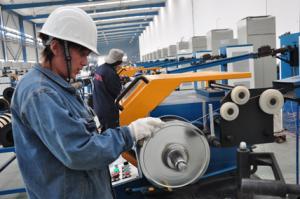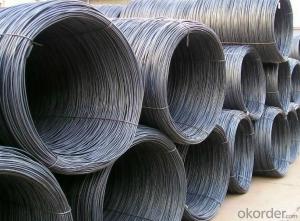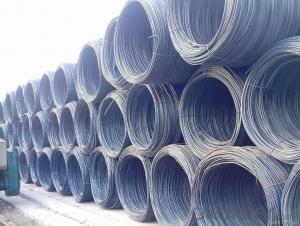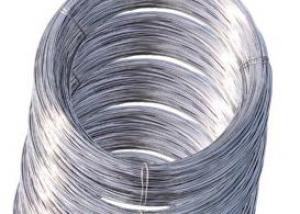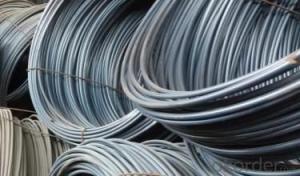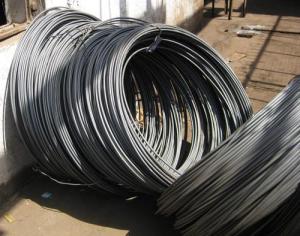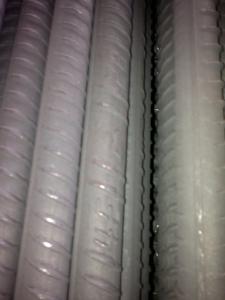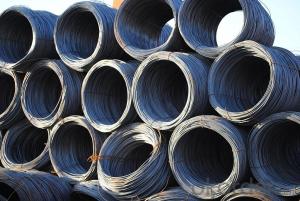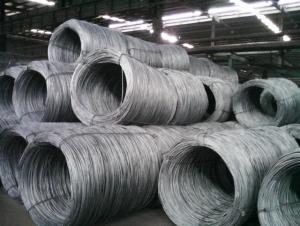stainless steel wire 304 with high quality
- Loading Port:
- Shanghai
- Payment Terms:
- TT OR LC
- Min Order Qty:
- 50 m.t.
- Supply Capability:
- 10000 m.t./month
OKorder Service Pledge
OKorder Financial Service
You Might Also Like
Quick Details
Steel Grade: 201.304.316.316L
Standard: AISI, ASTM, BS, DIN, GB, JIS
- Type: ungalvanized
Application: Construction
Alloy Or Not: Non-alloy
- Diameter range: 0.02-16mm
Standard: AISI, ASTM, DIN, GB, JIS, SUS
Packaging & Delivery
| Packaging Details: | Coils Packing, spools packing, or according to the customers' requirements |
|---|---|
| Delivery Detail: | 10-20days after confirm the order |
Specifications
Good quality stainless steel wire 304
1.Diameter range:0.15-15mm
2.Main application:making spring,mattress,wire
Good quality stainless steel wire, stainless steel wire 304
| Grade | 201.304.316.316L |
| Diameter | 0.15-15mm |
| Standard | AISI, ASTM, DIN, GB, JIS, SUS |
| Weight | According to the customers' requirements |
| Uses | To produce springs, steel wire ropes, brush and other uses |
| Packing | Coils Packing, spools packing, or according to the customers' requirement |
Terms:
1) Loading Port: Shanghai
2) Delivery term: FOB,CFR, CIF
3) Delivery lead time: 10 working days after received deposit.
4) Payment term:30% by T/T as deposit., balance will be paid by T/T before loading,
5) Quality assurance: Mill Test Certificate is supplied with shipment, third Party Inspection is acceptable.
- Q: What are the common industry certifications for steel wire rod professionals?
- Some common industry certifications for steel wire rod professionals include the Certified Steel Wire Rod Specialist (CSWRS) certification, the Certified Wire Rod Technician (CWRT) certification, and the Certified Wire Rod Quality Control Professional (CWRQCP) certification. These certifications demonstrate a professional's knowledge and expertise in various aspects of steel wire rod production, quality control, and technical understanding.
- Q: What are the common manufacturing defects found in steel wire rod?
- Some common manufacturing defects found in steel wire rods include surface cracks, internal voids or inclusions, improper dimensions or tolerances, and uneven or inconsistent surface finishes. Other defects may include improper metallurgical properties, such as high levels of impurities or inadequate heat treatment, which can weaken the wire rod's strength and durability.
- Q: How is steel wire rod used in the manufacturing of wire forms for elevator cables?
- The manufacturing process of wire forms for elevator cables heavily relies on steel wire rod. To meet the necessary strength and flexibility requirements, the steel wire rod is initially processed and drawn into a specific diameter and shape. Afterward, a protective layer is applied to the wire rod, enhancing its durability and resistance to corrosion. Once the steel wire rod is prepared, it undergoes further processing to form wire strands. These strands are then twisted together, resulting in elevator cables with the desired load-bearing capacity and strength. The specific requirements of the elevator cable determine the number of wire strands and the tightness of the twisting. The utilization of steel wire rod in wire form manufacturing guarantees that elevator cables can withstand the continuous movement and heavy loads involved in elevator operation. The safety and reliability of the elevator cables are greatly influenced by the strength and flexibility of the steel wire rod. Moreover, strict quality control measures are implemented in the manufacturing of elevator cables using steel wire rod to adhere to industry standards and regulations. This ensures that the wire forms produced using steel wire rod are of superior quality and capable of enduring the demanding demands of elevator systems. In conclusion, the role of steel wire rod in the manufacturing of wire forms for elevator cables is paramount. Its strength, flexibility, and durability are crucial in creating elevator cables that can safely and reliably transport passengers and goods within buildings.
- Q: What are the main factors affecting the market innovation of steel wire rod?
- The main factors affecting the market innovation of steel wire rod include technological advancements, changes in consumer demand, competition within the industry, government regulations and policies, and the availability and cost of raw materials.
- Q: How is steel wire rod used in the manufacturing of reinforcement bars?
- Steel wire rod is used in the manufacturing of reinforcement bars by being transformed into a continuous coil through a series of processes such as hot rolling, cooling, and surface treatment. This coil is then further processed to obtain the desired diameter and shape of reinforcement bars, which are widely used in construction projects to enhance the tensile strength and durability of concrete structures.
- Q: How is steel wire rod used in the manufacturing of wire mesh baskets?
- Steel wire rod is used in the manufacturing of wire mesh baskets as the primary raw material. It is first drawn into thinner wires, which are then woven or welded together to form the mesh structure of the basket. The strong and durable nature of steel wire rod ensures that the wire mesh baskets have sufficient strength and stability to hold various items securely.
- Q: What are the different types of steel wire rod annealing furnaces?
- There are several different types of steel wire rod annealing furnaces that are commonly used in the industry. These furnaces are designed to heat the wire rod to a specific temperature and then slowly cool it down to enhance its mechanical properties and reduce internal stresses. One type of annealing furnace is the bell-type furnace. This furnace consists of a cylindrical chamber with a movable cover or bell that seals the chamber during the annealing process. The wire rod is loaded into the chamber and heated to the desired temperature using electric heating elements or gas burners. The bell-type furnace is known for its efficient heat transfer and uniform temperature distribution, making it suitable for annealing large batches of wire rod. Another type of annealing furnace is the pit furnace. This furnace is built into the ground or a pit and has a series of burners or heating elements positioned around the chamber. The wire rod is loaded onto trays or fixtures and placed inside the furnace for annealing. The pit furnace is often used for annealing smaller batches of wire rod and is known for its energy efficiency and versatility. Continuous annealing furnaces are also commonly used in the wire rod industry. These furnaces consist of a series of heating and cooling zones that allow the wire rod to be continuously fed through the furnace for annealing. The wire rod is heated to the desired temperature and then cooled down using water or air jets. Continuous annealing furnaces are known for their high production capacity and ability to anneal wire rod of various sizes and shapes. In addition to these types, there are also other specialized annealing furnaces such as roller hearth furnaces, walking beam furnaces, and rotary hearth furnaces. Each of these furnaces has its own unique design and operational characteristics that make them suitable for specific applications in the wire rod industry. Overall, the choice of annealing furnace depends on factors such as production requirements, wire rod specifications, and cost considerations. It is important to select the right type of furnace to ensure optimal annealing results and maximize the quality of the wire rod produced.
- Q: What are the different packaging materials used for steel wire rod?
- There are several different packaging materials commonly used for steel wire rods. These materials are chosen based on factors such as the length and weight of the wire rods, the level of protection required during transportation, and the ease of handling for both the manufacturer and the end user. Here are some of the most commonly used packaging materials for steel wire rods: 1. Steel Coils: One of the most popular packaging options for steel wire rods is to bundle them into coils. The wire rods are wound tightly into a coil shape using a winding machine. This method provides a compact and secure packaging solution, making it easy to transport and handle the wire rods. 2. Wooden Reels: For longer and heavier wire rods, wooden reels are often used. The wire rods are wound around a wooden reel, providing a larger and more stable packaging option. Wooden reels are commonly used for wire rods that are used in construction and industrial applications. 3. Pallets: Another packaging option for steel wire rods is to stack them on wooden or plastic pallets. This method provides a stable base for the wire rods and allows for easy handling using forklifts or pallet jacks. Pallets are commonly used for bulk shipments of wire rods. 4. Cardboard Boxes: Smaller wire rods or wire rods with specific length requirements may be packaged in cardboard boxes. These boxes provide protection against damage during transportation and allow for easy handling and storage. 5. Plastic Wraps: In some cases, steel wire rods may be packaged using plastic wraps. This method is often used for smaller quantities or when the wire rods need to be protected from moisture or dust during transportation. It is important to note that the choice of packaging material may vary depending on the specific requirements of the wire rod manufacturer and the end user. Factors such as cost, transportation method, and storage conditions can also influence the selection of packaging materials.
- Q: What are the main factors influencing the choice of steel wire rod warranty?
- The main factors influencing the choice of steel wire rod warranty include the quality and reliability of the product, the reputation and trustworthiness of the manufacturer, the terms and conditions of the warranty, the length of the warranty period, and the level of customer support provided by the manufacturer.
- Q: What are the different international specifications for steel wire rod?
- There are several different international specifications for steel wire rod, which outline the specific requirements and characteristics that the wire rod must meet. Some of the most commonly used international specifications for steel wire rod include: 1. ASTM A510: This specification covers general requirements for carbon steel wire rods and applies to both hot-rolled and cold-finished wire rods. 2. EN 10016-2: This European standard specifies the general requirements for non-alloy steel rod and wire for cold heading and cold extrusion. 3. JIS G 3505: This Japanese Industrial Standard covers low carbon steel wire rods for general use, including welding wire, nails, and wire ropes. 4. GB/T 699: This Chinese national standard defines the technical requirements for carbon structural steels, including wire rods. 5. ISO 16120-4: This international standard specifies the general requirements for steel wire rod, including dimensional tolerances, mechanical properties, and testing methods. Additionally, various industry-specific standards and specifications may exist for steel wire rod used in specific applications, such as automotive, construction, or electrical industries. These may include standards from organizations like SAE International or specific customer requirements. It is essential to consult the relevant specifications when manufacturing or sourcing steel wire rod to ensure compliance with the required standards and meet the specific needs of the intended application.
Send your message to us
stainless steel wire 304 with high quality
- Loading Port:
- Shanghai
- Payment Terms:
- TT OR LC
- Min Order Qty:
- 50 m.t.
- Supply Capability:
- 10000 m.t./month
OKorder Service Pledge
OKorder Financial Service
Similar products
Hot products
Hot Searches
Related keywords
